Katie
Alfred Lambourne Program 2021
Join FRIENDS of Great Salt Lake as we showcase local artists' depictions of our Inland Sea in the categories of visual arts, literary arts, movement, and sound.
When: Friday, November 5, 2021 from 6:30-8:30pm
Where: Sugar Space Arts Warehouse, 132 S 800 W, Salt Lake City, UT 84104
This event is free to attend.
Visit the Facebook event page for updates.
Click here to read more about the Alfred Lambourne Arts Program.
Great Salt Lake’s demise spurs water emergency for Utah
E&E News | By Jeremy P. Jacobs | 10/12/2021 12:16 PM EST
Utah’s iconic Great Salt Lake, long neglected by regulators, is collapsing due to a historic drought and climate change.
And, in a cruel twist, the demise of the lake — which shriveled to a record low level in July — may threaten Utah’s posh ski towns and even the state’s water supply.
At issue: the "lake effect."
The sprawling Great Salt Lake doesn’t freeze in the winter due to its high salt content, so when some storms blow in, they collect the lake’s moisture, strengthen, then deliver extra snow to the Wasatch Mountains.
That snow is the lifeblood of ski towns like Alta and Snowbird, but it also contributes to water supply. Utah gets 95 percent of its water from snowpack.
Scientists say it’s unclear just how much the lake effect boosts the snowpack, but current research suggests it’s 5 to 8 percent.
But every snowflake matters in a drought. Utah has suffered a year of low precipitation, low snowpack and low soil moisture, so the snowmelt that has occurred has been absorbed by the ground and hasn’t flowed into reservoirs, which are currently 47 percent full.
The drought and water situation "is worse than we’ve seen," said Laura Haskell of the Utah Division of Water Resources.
At the same time, Utah’s population continues to grow. It has 3 million residents and counting — and two-thirds of them live near the Great Salt Lake.
Scientists who call the lake a "fuel gauge" for Utah’s water say the empty light is flashing.
"The trend is there: The lake is just continually drying," said Simon Wang of Utah State University. "That seems to be inevitable.”
The lake is demonstrating the cascading effects of climate change, all of which spell trouble for Utah. More frequent droughts mean less precipitation, and warmer temperatures mean more rain, less snowpack and increased water demand from farms.
At the same time, the shrinking Great Salt Lake is exposing a lake bed that emits dust, creating toxic air pollution in an area already afflicted with poor air quality. That dust also has an impact on snowpack. It settles on snow, making it darker and more apt to absorb sunlight quickly and melt faster — depleting the snowpack before runoff season.
"It’s like a spiraling effect," said Jordan Clayton, a Utah Snow Survey data collector for the Department of Agriculture’s Natural Resources Conservation Service.
The Great Salt Lake is frequently referred to as the "Great Sewer" because it is last in line to receive water. And the water that makes it to the lake is often contaminated with agricultural chemicals and other waste.
But the lake is vital to Utah’s ecology and economy. It is a critical rest stop for millions of migrating birds and serves a roughly $57-million-per-year brine shrimp harvesting industry.
Those factors plus its potential impact on air quality and snowpack have led some to push for renewed efforts to guarantee some clean water inflows for the lake in the face of climate change and drought.
In the past, those efforts have failed.
"It’s a barometer of climate change — a good example of the canary in the coal mine," said Jim Steenburgh of the University of Utah, who has studied the lake’s impact on water and snowpack.
"The lake is screaming at us right now."
New normal
In the 19th century, pioneers arrived at the Great Salt Lake finding a massive but shallow body of water whose size varied dramatically from 990 to 2,340 square miles. It’s America’s largest lake by surface area after the Great Lakes.
But salt makes the Great Salt Lake’s water undrinkable. And so it became an economic engine as mining interests began extracting minerals like magnesium and salt, and other industries used it as a dumping ground.
In the 1950s, a railroad causeway was built across the lake, effectively splitting it in two.
Researchers have a long record of water levels in the southern part of the lake, where most of the inflows occur. There, water flows from the main tributary, the Bear River, which provides 63 percent of the lake’s water flows.
Ryan Rowland of the U.S. Geological Survey said water level data dates to 1847.
This July, it hit the lowest level since 1963. And it has continued to fall due to low snowpack runoff. Usually, the lake rises from 1.5 to 2 feet every year. In good years, that part of the lake rises 4 feet.
This year: less than a foot.
That’s led experts to anxiously look ahead to next winter, and hope for a large snowpack that produces more runoff — something far from guaranteed.
"Snowpack — healthy, above-normal snowpacks — are critical for Great Salt Lake," Rowland said. "They just are."
Another poor snowpack year combined with a hot, dry summer could lead to another 3 feet of water-level decline in the lake next year, Rowland said.
But forecasters also warned that Utah needs more than just a good snowpack year; it needs an extraordinarily wet year to rise from drought conditions.
Over the past two years, Utah has racked up a precipitation deficit of nearly 15 inches, Clayton said. To get back to normal and recover, Utah has to get that on top of its average precipitation level, about 32 inches per year.
That means Utah would need between 40 and 50 percent more precipitation than usual to recover, he said, underscoring the dire situation the state is in.
Those factors have also translated into a new normal or average for the Great Salt Lake, said Laura Vernon of the Utah Department of Natural Resources Division of Forestry, Fire and State Lands.
Historically, the lake level has fluctuated, but its average elevation has been around 4,200 feet.
"My understanding is that average is history," Vernon said. "We are going to need to figure out how to adapt to some of those lower lake elevations."
Political hazards
This isn’t the first time scientists and conservationists have raised significant concerns about the lake and its impact on Utah’s growing population.
Five years ago, there was an effort to try to guarantee a lake level or take other measures due to concerns about effects of the declining lake level — and the dust from its contaminated and exposed lake bed — on the region’s air quality (Greenwire, July 11, 2016).
But efforts to secure a guaranteed lake level never got anywhere in the Utah Legislature, Vernon said.
"It’s politically charged," she said. "That’s the environmentalists’ way to manage the lake. That hasn’t been a well-received strategy to manage the lake."
Vernon said there is now an effort underway to try to guarantee at least some inflows into the lake.
"Now what people are focusing on are these smaller efforts to do what you are talking about — to ensure water gets to the lake," she said. "But it’s not this big magic number."
She noted that the impacts are not just on air quality and, potentially, water supply. Some research suggests a considerable increase in dust and its effect on snowpack could shorten Utah’s ski season by five to seven weeks.
Vernon said the situation at the Great Salt Lake shows the West needs to start reevaluating its relationship to water.
"The adaptation that needs to happen is we need to change the way we think about water in the West, what is important to us and where our values lie," she said, adding that there will be billions of dollars of health impacts and significant ecological consequences if the lake continues to shrink.
"If we know that now and we aren’t taking measures to rectify this, that’s on us and future generations that will struggle with it," she added. "People are starting to see that now."
Editorial: How the deal to stop draining Mono Lake can help settle California’s future water wars
LOS ANGELES TIMES • BY THE TIMES EDITORIAL BOARD
OCT. 10, 2021 5 AM PT
It has been four decades since a California Supreme Court ruling limited Los Angeles’ right to drain the distant Mono Lake Basin to quench the thirst (and water the lawns and flush the toilets) of L.A. residents.
But the decision in National Audubon Society vs. Superior Court only began a long and painstaking series of talks among the city, environmentalists and others. A landmark 2013 settlement agreement left for later the all-important details on how Los Angeles was to restore four streams that flow down the eastern slope of the Sierra Nevada to feed the endangered hyper-saline and alkaline lake, known for its strange-looking tufa towers.
In a little-noticed announcement on Monday, the parties said they had reached agreement on final implementation. Terms were embodied in an order by the state Water Resources Control Board, the regulatory agency that has played a key role in giving teeth to the court’s Mono Lake ruling.
It’s an important achievement, demonstrating that it’s possible for a city that once plundered the pristine Eastern Sierra to be a champion of its restoration. Particular credit is due to the Mono Lake Committee, which was formed in 1978 to save the lake; and also its adversary, the L.A. Department of Water and Power, which historically has kept water flowing to the city and continues to press for a reliable water supply, but is now also a partner in protecting the environment. Managing the inherent tension between those two goals is one of the definitional tasks of 21st century California.
Credit is also due to Mayor Eric Garcetti and his appointees to the DWP Board of Commissioners, without whom final agreement was unlikely.
The plight of Mono Basin and its enticing water supply is related to, but not the same as, that of the more storied Owens Valley some 130 miles downstream. The Los Angeles Aqueduct began drying up Owens Lake in 1913, but L.A. needed even more water and looked northward. A tunnel completed in 1941 began diverting stream water that once flowed into Mono Lake, lowering the surface level by 45 feet and creating a land bridge for coyotes and other predators to an island and its bird nesting grounds.
The 1979 lawsuit and the court’s ruling four years later established that Los Angeles’ lawful rights to the water had to be balanced with the public’s right to preserve the lake. The case vindicated the “public trust doctrine” as a major force in California water rights, even if settlement talks continued for decades.
There are several important takeaways from last week’s agreement, in addition to proof that L.A. can be a force for good in the environment.
One is that water disputes can take a very long time to resolve. But elected leaders like Garcetti can break the logjam by focusing water agencies on the ecological restoration portion of their mission — something they will rarely do on their own, because their orientation is to deliver water. L.A. residents are no doubt grateful for the DWP’s water acumen. They are likely to appreciate the agency’s developing environmental role as well.
Another takeaway is that the state water board can effectively act in the public interest, if it’s given a sufficient measure of independence to do its work.
Yet another takeaway is the reminder that none of this progress would have been made had not a dedicated group of environmental advocates gone to court many years ago. The “voluntary” talks, and ultimately the agreement to relinquish the rights to a great deal of water, were possible only because the court ruling and the water board actions gave city officials no choice but to engage.
Similarly, an agreement was reached to restore the San Joaquin River in the Central Valley — 60 miles of which had dried up due to diversion of water to farms — only because a lawsuit brought the parties to the table and compelled earnest talks.
Contrast that with the current situation on both the San Joaquin and the Sacramento rivers, where the water board has held off on issuing mandates to limit water for agricultural interests to restore sufficient flow levels so that migrating Chinook salmon might have a fighting chance at survival. Gov. Gavin Newsom has called on water agencies and environmental preservation organizations, which are miles apart on diversions and flow levels, to instead reach “voluntary agreements” without first being compelled by a court ruling or water board order to meaningfully engage.
This backward approach leads to talks that could go on as long as the Mono Lake discussions, but without much chance of conclusion. If California is to save the two great rivers that drain its largest watershed, the governor should note the successful conclusion of the Mono Lake dispute and free the water board to issue mandates. Only then will the parties come to the table truly ready to deal.
Click here to read this story on the Los Angeles Times website.
As Great Salt Lake shrivels and Salt Lake Valley’s population swells, state regulators reveal what worries them most
‘Air quality and the Great Salt Lake levels are very tightly coupled,’ one scientist warns.
Salt Lake Tribune | By Leia Larsen | Oct. 2, 2021, 8:15 a.m.
Utah has made strides in cleaning up its polluted air, but climate change could blow up that progress.
One need only look at the drying Great Salt Lake to see a ticking time bomb — as its lakebed gets exposed and desiccated, it could turn into a toxic source of pollution in the form of blowing dust.
“We’re really concerned about the Great Salt Lake and the impacts that we’re seeing due to historic drought, but also clearly the impacts due to a shifting climate and all of the variables that we simply can’t control as humans or policymakers,” said Utah Sen. Derek Kitchen, D-Salt Lake City, who hosted a town hall about the lake and air quality this week. He said he has been “inundated” with calls from concerned constituents.
The lake hit a record low elevation in July, and with an intense drought gripping nearly all of the state, there is little relief in sight.
Last year, the Great Salt Lake Advisory Council released a report with 12 strategies to increase the amount of water reaching the lake. Some include efforts that are already underway, like metering untreated secondary water and incentives for more efficient irrigation. Others require rethinking longstanding water laws, such as recognizing a right to conserve water and finding a way to make sure that conserved water makes it way to the lake.
“I like to think of the Great Salt Lake as a wicked problem where there is no one solution,” said Laura Vernon, who works as the Great Salt Lake coordinator in a new role created by the Legislature. “The solution isn’t cheap. And [if] you solve one problem somewhere, then it creates another problem somewhere else.”
The Great Salt Lake desperately needs water, state regulators noted during the town hall, but there is no easy way to get it. A 2016 study conducted by the Division of Water Resources, Utah State University and others found the lake’s elevation would be 11 feet higher today if humans didn’t divert water from its tributaries, like the Bear, Weber and Jordan rivers. Water rights lay claim to every drop in the state, and there is little incentive for the people holding those rights to let them keep flowing downstream, especially as persistent drought drains the state’s reservoirs.
Click here to read the full story on the Salt Lake Tribune website.
A Step Forward in Securing Water for a Drying Great Salt Lake
Collaboration of business, government agencies, and conservation groups dedicate water to Farmington Bay of Great Salt Lake for ten years.
National Audubon Society • October 04, 2021
SALT LAKE CITY—As Great Salt Lake experiences alarmingly low water levels this year—dropping by nearly a foot below its previous historic low, the Utah Division of Water Rights this past week approved applications to deliver water to Farmington Bay of Great Salt Lake via the Jordan River. An innovative partnership is laying the groundwork to voluntarily share water for the lake to meet crucial needs for people, birds, and other wildlife.
The Utah Division of Wildlife Resources, Rio Tinto Kennecott, Central Utah Water Conservancy District, National Audubon Society, The Nature Conservancy, and Utah Reclamation Mitigation and Conservation Commission collaborated to achieve this important step in addressing Great Salt Lake’s declining water levels. Through two donations of water rights, up to approximately 21,000 acre-feet of water annually could be delivered to Farmington Bay over the next ten years, subject to seasonal water availability and priority of water rights.
Ensuring water flows to Great Salt Lake and its wetlands over the long term is the single most important strategy to prevent further drying of the lake. The state’s 2019 Concurrent Resolution to Address Declining Water Levels of the Great Salt Lake (HCR010) clearly “recognized the critical importance of ensuring adequate water flows to Great Salt Lake and its wetlands, to maintain a healthy and sustainable lake system.”
Keeping water flowing to Great Salt Lake’s wetlands and open water habitats is vital to maintaining important natural areas of international and hemispheric importance for birds, while also benefiting people. Recreational opportunities—including birding, hunting, and boating—as well as the minerals and brine shrimp industries that rely on the lake represent nearly $1.32 billion annually in economic activity. In addition to the economic, ecological, and cultural importance of a healthy lake, adequate water levels also protect public health from lakebed dust exposure, and contribute to Utah’s lake effect snow.
“The Utah Division of Wildlife Resources is dedicated to conserving, enhancing and actively managing Utah’s protected wildlife populations, which include shorebirds, waterfowl and other waterbirds,” said Justin Shirley, Director of the Utah Division of Wildlife Resources. “We appreciate this donation that represents a significant milestone for the Division and its ability to manage water needs for wildlife in unimpounded areas of Great Salt Lake and support critical wetland habitat around its shores.”
Rather than leaving the Jordan River at the historical diversion points some 30 to 40 miles upstream, the water will flow down river into Great Salt Lake, where the Jordan River flows into Farmington Bay.
“The Great Salt Lake sits on Rio Tinto Kennecott’s doorstep. It’s always been essential to our operations and our employees who care about the lake,” said Gaby Poirier, managing director of Rio Tinto Kennecott, which is donating up to 18,387 acre-feet of water annually. “This is a significant win for the health of the Great Salt Lake and a first in water rights history that we’re able to contribute to the lake as a beneficial water use. We’re excited to be part of this collaborative partnership that allows us to share water resources that benefit wildlife, habitats, delicate ecosystems and the whole Salt Lake Valley.”
Great Salt Lake water levels vary seasonally and from year to year, but overall have been on a steady long-term decline the last 150 years due to water diversions, drought, and a changing climate. Low water flows have particularly affected Farmington Bay, which includes the second-largest wetlands area on Great Salt Lake, covering approximately 121,500 acres. Currently, much of the lakebed in Farmington Bay is dry and exposed.
The aim is to deliver water for beneficial use into Great Salt Lake through voluntary water transactions while not interfering with other water rights, largely held by duck clubs along the south shores of the lake. Importantly, partners worked to find ways to use existing laws and policies to achieve the transactions.
“We are pleased to join in this partnership and use some of our water rights to benefit Great Salt Lake and Farmington Bay and its wildlife, while building relationships with organizations that understand the complexities of sustaining both environmental and community water needs,” said Gene Shawcroft, General Manager of Central Utah Water Conservancy District (District), which donated 2,927 acre feet of water annually. “The District has made instream flow commitments in many areas of the District, including environmental flows in the Sixth Water, Diamond Fork, and tributaries of the Duchesne River. This collaboration also helps the District realize its efforts to support environmental needs in ways that can have long-lasting effects on policy and provide avenues for future District projects that benefit nature.”
Farmington Bay, one of five Globally Important Birds Areas at Great Salt Lake, is a key resource for migratory birds. The Bay provides habitat for a large number of the world's bird populations, including American Avocet, Black-necked Stilt, Cinnamon Teal, Ruddy Duck, White-faced Ibis and Wilson's Phalarope.
“The health of Farmington Bay is essential to the health and productivity of the adjacent wetlands, including Audubon’s Gillmor Sanctuary, and we are grateful for this collaboration and the generous contributions of our partners,” said Marcelle Shoop, director of the National Audubon Society’s Saline Lakes program. “We also believe this project lays the foundation for future water transactions that can benefit wetlands and open water habitats of the lake. Audubon will continue to look for creative ways to ensure flows to Great Salt Lake and its wetlands.”
In 2019, Audubon and The Nature Conservancy approached Wildlife Resources, Kennecott and the District to explore opportunities for using Jordan River water rights to benefit Great Salt Lake’s Farmington Bay and correspondingly, the Lower Jordan River.
“The Nature Conservancy in Utah (TNC) has spent years working to protect the health of the Great Salt Lake ecosystem, which provides invaluable benefits to Nature and the people who live and work along the Wasatch front,” said Dave Livermore, Utah State Director for TNC. “Our Great Salt Lake Shorelands Preserve, located at the edge of Farmington Bay, will also benefit from maintained flows into the Bay, and we greatly appreciate all the contributions of these partners in helping this project come to fruition.”
The Utah Reclamation Mitigation and Conservation Commission (Mitigation Commission), which is responsible for projects to offset the impacts to fish, wildlife and related recreation resources caused by federal water reclamation projects in Utah, also joined the collaboration.
“The Commission has implemented important wetlands mitigation and conservation projects on the Jordan River and Great Salt Lake and we are fortunate to have longstanding relationships with all these partners in our efforts,” said Mitigation Commission Executive Director Mark Holden. “We greatly appreciate water right donations from Kennecott and the District, as well as Wildlife Resources’ pivotal management role using the water to benefit wildlife and the public. Likewise, the leadership of Audubon and TNC in their outreach and deliberative approach to water management lays an important pathway for similar efforts to preserve Great Salt Lake’s future.”
###
Contact:Joey Kahn
480.788.2416
Click here to read this story on the National Audubon Society website.
Public comment sought for new Water Resources Plan
Utah Division of Water Resources • Published 09-29-21
SALT LAKE CITY (Sept. 29, 2021) – The Utah Division of Water Resources is seeking public input on the new Water Resources Plan. This plan is the result of years of data gathering, modeling and other collaborative efforts to identify when and where water will be needed throughout the state. The comment period runs Sept. 29-Nov. 15, with a virtual open house scheduled for Oct. 20.
“A safe, reliable water supply is critical to Utah’s prosperity and quality of life. This plan provides a comprehensive look at Utah’s current water use and supply conditions and future demand scenarios,” said Candice Hasenyager, director of the Division of Water Resources. “It’s a long-range planning document and not a ‘drought response plan’ to address the current extreme drought.“
The plan focuses on three water management principles:
- Reliable data is needed to make informed water management decisions.
- Supply security requires a comprehensive approach.
- Healthy watersheds are necessary to ensure the viability of the state’s precious water resources.
It also prioritizes actions the Division of Water Resources will undertake in the coming years.
“In the past, statewide water plans have been more of a status update,” said Rachel Shilton, the division’s river basin planning manager. “This plan focuses on goals the division will strive to accomplish by 2026 and was shaped by input from the State Water Plan Advisory Committee, a diverse group of experts and stakeholders.”
Because water management is complicated and involves the coordination of several state agencies as well as local suppliers, a collaborative effort is also underway to produce a more holistic “State Water Plan” rather than this division-specific Water Resources Plan. Contributing agencies include the Governor’s Office of Planning and Budget, Department of Agriculture and Food, Department of Environmental Quality (divisions of Drinking Water and Water Quality), and Department of Natural Resources (divisions of Water Resources, Water Rights, Wildlife and Forestry, Fire and State Lands). This coordinated action plan will include a comprehensive implementation strategy as the state continues to plan for rapid growth, climate change and sound management of an uncertain natural resource.
“We look forward to the public comment process, which will help us improve our water planning processes,“ said Hasenyager. “We look to science and data and continued collaboration as we prepare for the future.”
View the plan and submit public comment Sept. 29 through Nov. 15 on the division’s webpage.
Media Contact
Kim Wells – Public Information Officer
Utah Department of Natural Resources
Phone: 801-803-0336
Email: KimWells@Utah.gov
Click here to read this announcement on the Utah Division of Water Resources website.
Ambientalia Experience: Preserving International Saline Wetlands
Click here to access the program brochure.
FRIENDS of Great Salt Lake is partnering with Fundación Líderes de Ansenuza and the Mono Lake Committee to bring together high school students from three saline lake communities:
- Mar Chiquita, Argentina.
- Mono Lake, CA, United States.
- Great Salt Lake, UT, United States.
The main goals are:
- To learn about the different sites with help from researchers.
- To create an international community that protects saline wetlands.
- To engage in fun online games and challenges.
Why these sites?
The three wetlands have been considered part of a "three-way twinning" since 1992 by the Western Hemisphere Shorebird Reserve Network (WHSRN) due to their ecological similarities and the large number of migrating Wilson's Phalaropes all these sites host at different times of the year.
Who can participate?
Participants will be high school students, ages 15 to 19. They will have the support of interested teachers that will enroll as tutors.
How long is the program?
The program will last approximately two months, starting in late September and ending in November.
How are we going to communicate?
Our main communication channel will be in a WhatsApp group. The calls and conferences will be on Zoom.
How can I enroll?
Teachers and students interested in participating in Ambientalia Experience will complete a Google Form with contact information. Apply by September 30!
Timeline and Activities
We have planned fun activities to engage with students and teachers from different sites while learning about the conservation of saline wetlands.
September
- Introductory call will Ambientalia's team.
- First international call with participants from the three sites.
October
- Migratory birds Zoom and team challenge.
- Newscast challenge presenting the three sites.
- Workshop about threats and conservation: creation of an international Instagram campaign.
November
First international forum "Lagos Hermanos" for high school students.
Click here to access the program brochure.
Contact Katie Newburn at pelican@fogsl.org with any questions!
Great Salty Phenomenon: Investigating Great Salt Lake’s Decline through 3-D Science
Join FRIENDS and the Utah Society for Environmental Education for a FREE webinar on Thursday, 9/30 from 4-5pm.
Science is all around us! Great Salt Lake is an integral part of the Salt Lake Valley ecosystem. Come explore Great Salt Lake's changing water levels and the effects on the Salt Lake Valley ecosystem in an interactive evening with Katie Newburn, Education and Outreach Director for Friends of Great Salt Lake, and Kristen Bonner, science educator at Indian Hills Elementary.
This webinar will include current information on the state of Great Salt Lake, model best practices in science education, and incorporate ideas for solutions to environmental problems. Participants will leave with a complete lesson and resources from Friends of Great Salt Lake that correlate to the Utah SEEd Standards.
We encourage all educators to attend, from K-12 teachers to informal educators and any other interested parties. This webinar will be sure to excite learners of all ages about the natural world!
Will We Choose to Save the Great Salt Lake? Part 3: Easy Choices, Difficult Changes
Dogged Conservation and Optimism
Human health. Jobs. Global industries. International wildlife significance. For the Great Salt Lake, the key boxes all seem to be checked. Yet those working for the Lake's protection over the years have had to wage an uphill PR battle.
The Nature Conservancy (TNC) made its first purchase at the Great Salt Lake in 1984, protecting wetland bird habitat threatened by development. Since then, TNC has worked with a suite of partners to protect more than 12,000 acres of wetlands and uplands around the Lake, including the Great Salt Lake Shorelands Preserve which stretches 11 miles and 4,531 acres along the Lake’s eastern shore, and serves as a crucial buffer against fast-growing development in Davis County. TNC also works with the Utah State University Botanical Center to run Lake-based outreach and education programs, which have reached more than 20,000 Utah students to date. Over the years, TNC has supported new science on Lake health and championed policy changes to enhance Lake protection and management. Ann Neville, TNC Utah’s Northern Mountains Regional Director, oversees current protection work at the Lake. “I think we’ve reached a time to truly celebrate the Lake,” says Neville. “For me, getting the right partners in the room, and seeing the traction we’re gaining is energizing.” In terms of conserving habitat around the Lake, TNC and many other entities have made real progress—sanctuaries around the Lake have also been established by Audubon, the State of Utah, and the U.S. Fish and Wildlife Service.
“The Great Salt Lake has always been one of our top priorities,” says Dave Livermore, TNC’s Utah State Director. “For more than 35 years, many of us have been beating this drum, and trying to safeguard the most vulnerable elements of the system—and honestly, just trying to give the Lake a seat at the table.”
Another veteran Lake advocate, Lynn de Freitas, the Executive Director of FRIENDS of Great Salt Lake (FOGSL), is also cautiously optimistic today. FOGSL is dedicated to growing an appreciation of the Lake through education and advocacy programs, and De Freitas has spoken out about threats to the Lake for years—from pollution to diversion to development. “It’s a never-ending battle, but I feel we’re moving in a positive direction. If we act in a timely way with a collective will, we can avert horrific results for people, for wildlife and for the world. Utah can still offer a success story.”
Building Consensus
Why is effectively protecting the Great Salt Lake such a tall order? It’s not just about the Lake’s public image. Part of the challenge, explains Laura Vernon, is the complexity of the Lake ecosystem itself and the way it’s managed by the State of Utah. Vernon is the Great Salt Lake Coordinator with Utah Department of Natural Resources Division of Forestry, Fire and State Lands. Her position is relatively new, and an indicator that state officials are realizing the need for better management across the Lake’s many moving parts. “You have the bed of the Lake, the water flowing to the Lake and the water in the Lake, as well as some of the lands around the Lake all being overseen by different divisions and departments,” Vernon says. “There has not been one entity responsible for looking at the Lake watershed as a whole.”
Vernon, who’s been working on Lake issues for 10 years, is feeling a new optimism. “It’s shocking to me how little attention the Lake has gotten historically, but things have grown leaps and bounds, even over the last year.”
She points to new, ongoing funding for the GSLAC, the Great Salt Lake Advisory Council led by Don Leonard, which this past fall released a report highlighting 12 key strategies to keep water in the Lake. The report’s recommendations range from changing Utah water law and creating new incentives for agricultural and municipal water conservation to new tools for the acquisition of water rights that could protect the Lake’s inflows.
“The report concluded that while each of the strategies will improve water management, a combination of key strategies is necessary to improve water delivery to Great Salt Lake,” says Leonard. “I’m pleased with the focus on the report and the attention it’s getting. We are working to build consensus behind the strategies.”
Consensus, Vernon hopes, is what may finally lead to a turning point. “It’s been impressive to see such a range of different stakeholders uniting behind a cause. I remember going on a tour out to Stansbury Island in the middle of the Lake with TNC and other conservation groups as well as folks from the mineral extraction industry. And they were all saying the same thing. It was remarkable.”
Flows, Laws and Progress
Still, even with strange new bedfellows holding hands, reversing water level declines at the Great Salt Lake will be no small endeavor. The strategies outlined by GSLAC are up against a special kind of inertia. “Implementing the strategies would require changes in some policies, practices, laws and regulations,” notes Leonard, “many of which have been in place for a long time and are institutionalized. Such changes require deliberation and mutual understanding. An important next step is securing understanding by and support from agriculture interests.”
Historically, Utah ranks high on state water consumption lists. Residents themselves could choose to make easy choices that would help, from repairing leaky faucets and taking shorter showers, to not overwatering their lawns. A large percentage of Utah’s water use, however, goes to agriculture. Legal issues governing western water users and historic laws are complicated and sensitive with far-reaching impacts. And pressures are mounting from all sides. Just this summer, more than 99 percent of Utah fell into “extreme” or “exceptional” drought conditions, per the U.S. Drought Monitor. According to the Utah Geological Survey web site “Increasing per capita water use coupled with rapid population growth and projected reductions in both snowpack and streamflow due to changing climate is not sustainable.” Water management is top of mind for Utah leaders. But for many years, the Great Salt Lake has been an afterthought. In fact, the State has never had a formally implemented policy to maintain Great Salt Lake water levels at any particular elevation range.
Despite the challenges, Representative Tim Hawkes, the Republican state legislator from northern Utah, is confident. In 2019, he led the passage of House Concurrent Resolution 10, which called on the State to support additional studies to understand the causes and impacts of the declining Lake levels. “I've never been more optimistic about the future of the Lake. HCR-10 has had remarkable staying power,” he says. “Now it feels like we’ve moved into more of a ‘research and testing’ phase. How do we better direct resources to answer critical scientific questions? How do we engage stakeholders in new and meaningful ways? How do we test drive solutions under existing legal authority on a small scale?”
In the most recent 2021 Legislative session, Hawkes successfully prompted Utah policy-makers to approve funding for two new Great Salt Lake projects: one is a study that will better quantify the contribution of groundwater to Great Salt Lake and its wetlands, while the other is an effort to support local governments that are interested in incorporating smart water planning into their land use planning processes. According to Hawkes: “I think it’s important for people to understand one critical fact: people can make a difference. Losing the Lake is not a foregone conclusion. Best available modeling suggests that, with some sensible and sustained effort, we can keep Lake elevations in a range where the Lake continues to support all its primary beneficial uses.”
Seeing Beyond Today
While Hawkes is convinced that the Lake’s impact on public health and the economy will motivate his fellow legislators, he’s also moved by the plight of the birds. “I remember one moment it hit home for me, the amount of life the Lake supports,” he says. “I took a trip to Promontory Point along the Union Pacific causeway in early autumn. From the moment we could see water south of the causeway to the moment we arrived on Promontory, the edge of the water was black with a thick band of countless birds. It went on for mile after mile. I've never seen so many at one time and in one place.”
It’s the type of epiphany that’s welcomed by Ella Sorensen, manager of the Edward L. and Charles L. Gillmor Audubon Sanctuary, a 3,597-acre preserve on the Lake’s South Shore. A chemist by training, Sorensen has spent decades studying the Great Salt Lake’s birds and writing about the Lake for the Salt Lake Tribune. When I ask her how to explain the Lake’s importance to someone on the street, she sighs. “It’s not effective to say things about Great Salt Lake. What works is to bring people out here.”
As Sorensen flicks mud from her boot tip, her soft, white hair lifts in the afternoon breeze. She’s just spent hours walking her daily route through the sanctuary’s sludgy marsh, which provides vital habitat for migratory shorebirds such as American avocets and snowy plovers. “I bring people out here who’ve lived in Utah their whole lives, but never understood the Lake until they came and saw the birds and the wetlands for themselves. It’s tremendously powerful.”
Perhaps that sheer Lake life force is part of what Terry Tempest Williams wanted us to contemplate when she wrote Refuge, 30 years ago. Her life story was inextricably linked to the Lake and the birds—and so is ours. We share in nature’s bounty, and in its decline.
Thirty years ago, Williams described living in a “virtually uninhabited” area near the Great Salt Lake. Today over 60 percent of Utah's population (more than 2.5 million people) live within 20 miles of the Lake. What will the next 30 years bring? For people? For the Great Salt Lake? For the birds? That answer, according to Williams, hinges on our choices. “The eyes of the future are looking back at us,” she wrote, “and they are praying for us to see beyond our own time.”
Click here to read this series on The Nature Conservancy website.
Record Low for Great Salt Lake
NASA Earth Observatory · August 18, 2021 · Story by Michael Carlowicz
In late July 2021, the Great Salt Lake in Utah reached its lowest water level on record, and it has continued dropping since then. On July 23, the U.S. Geological Survey (USGS) gauge at the Saltair boat harbor at the southern end of the lake recorded the average daily level at 4191.3 feet (1277.5 meters) above sea level, the lowest mark since measurements began in 1875. The previous low was set in 1963.
The Operational Land Imager (OLI) on Landsat 8 acquired images (above) of the north end of the Great Salt Lake on July 29, 2017, and July 24, 2021. Orange-brown areas along the edges of the lake indicate shallow water, while bright tan and white fringes suggest newly exposed portions of the lakebed. Note, too, the depletion of water in Clyman Bay and Bear River Bay. (Landsat also acquired images of the southern end of the lake during a similar dry spell in 2016.)
According to USGS, water levels in the southern part of the lake are usually a bit higher than the northern half because more tributaries flow into the southern section. The lake is divided by a causeway for the Union Pacific Railroad.
According to water elevation data from USGS (plotted above), the Great Salt Lake stood at 4191.0 feet (1277.4 meters) as of August 12, 2021. When full to its historic average level of 4,200 feet (1280 meters), the lake spreads across 1,700 square miles. With this week’s historic low, it spans about 950 square miles, a 44 percent loss of surface area.
The low lake levels are due to recent trends in precipitation and long-term trends in consumption by humans. Snowfall was modest to deficient in many areas last winter, and recent research showed that snow cover in the mountains around the Great Salt Lake melts at least a week earlier now than 20 years ago. Like much of the American West, rainfall has also been sparse here for the past two years. In its August 12 report, the U.S. Drought Monitor noted that 100 percent of Utah was experiencing at least severe drought; 50 percent of the state was in exceptional drought, the highest category.
“Based on current trends and historical data, the USGS anticipates water levels may decline an additional foot over the next several months,” USGS Utah Water Science Center data chief Ryan Rowland said in a July 24 statement. Due to the extreme drought, nearly two-thirds of Utah’s river and stream gauges are reporting below-normal flows.
The Great Salt Lake is the largest water body in the United States after the Great Lakes. It is a terminal basin, which means the water that pours into the lake from rivers and streams has no outlet other than evaporation. This allows salts and minerals to concentrate in the lake such that it is three to five times saltier than the ocean.
For more than 150 years, humans have been taking more water out of this closed basin—for farming, industry, and human consumption—than is flowing into it. Drought may have contributed to the recent drop in the lake, as have higher-than-normal temperatures. But according to scientists, there has not been a significant long-term change in precipitation in the basin.
In a white paper released in 2016, scientists noted that river flow into the basin—from the Bear, Jordan, and Weber rivers—has dropped 39 percent since the middle of the 19th century. The volume of water in Great Salt Lake has shrunk by 48 percent and the lake level has fallen 3.4 meters (11 feet) since 1847.
NASA Earth Observatory images by Joshua Stevens, using Landsat data from the U.S. Geological Survey and lake elevations from the National Water Information System. Story by Michael Carlowicz.
Click here to read this story on the NASA Earth Observatory website.


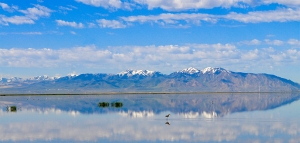
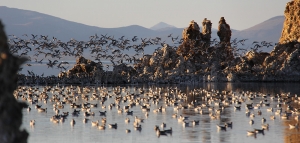
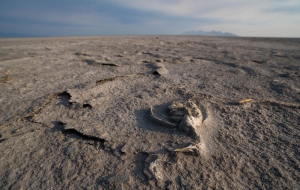
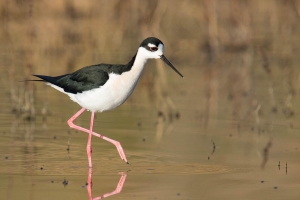
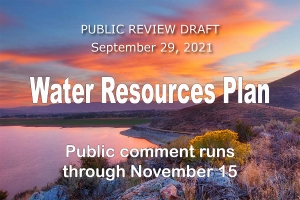
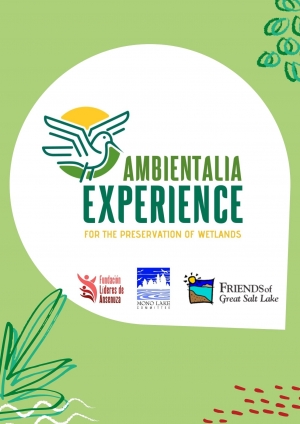
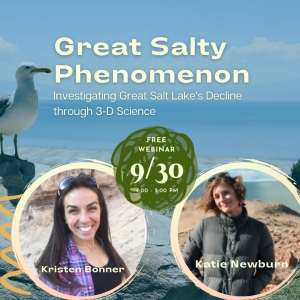
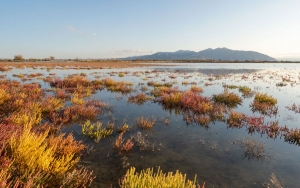
![The Operational Land Imager (OLI) on Landsat 8 acquired images of the north end of the Great Salt Lake on July 29, 2017 [left], and July 24, 2021 [right].](/media/k2/items/cache/ac9ff722ccee9f796dea38c810f03e02_Generic.jpg)